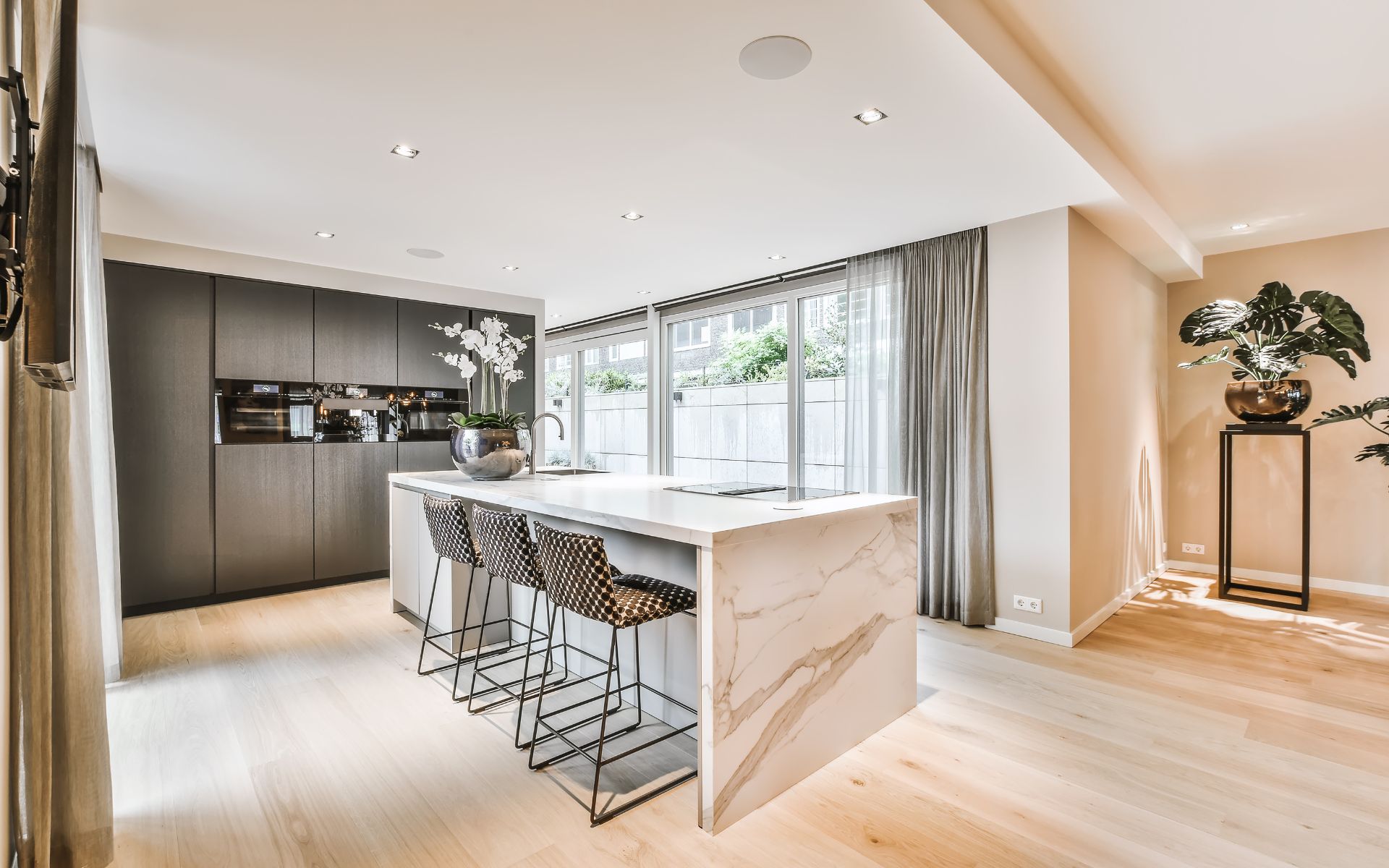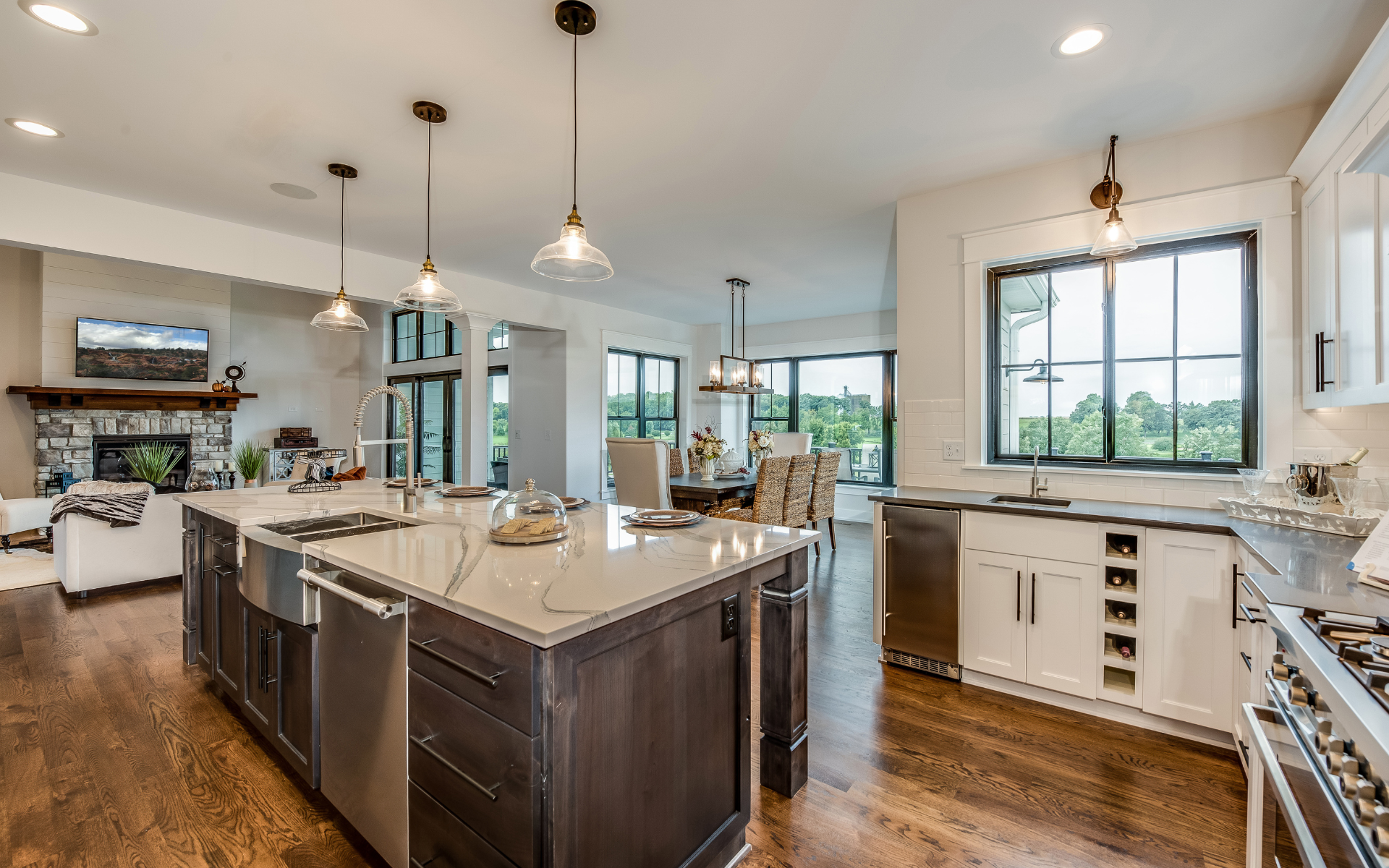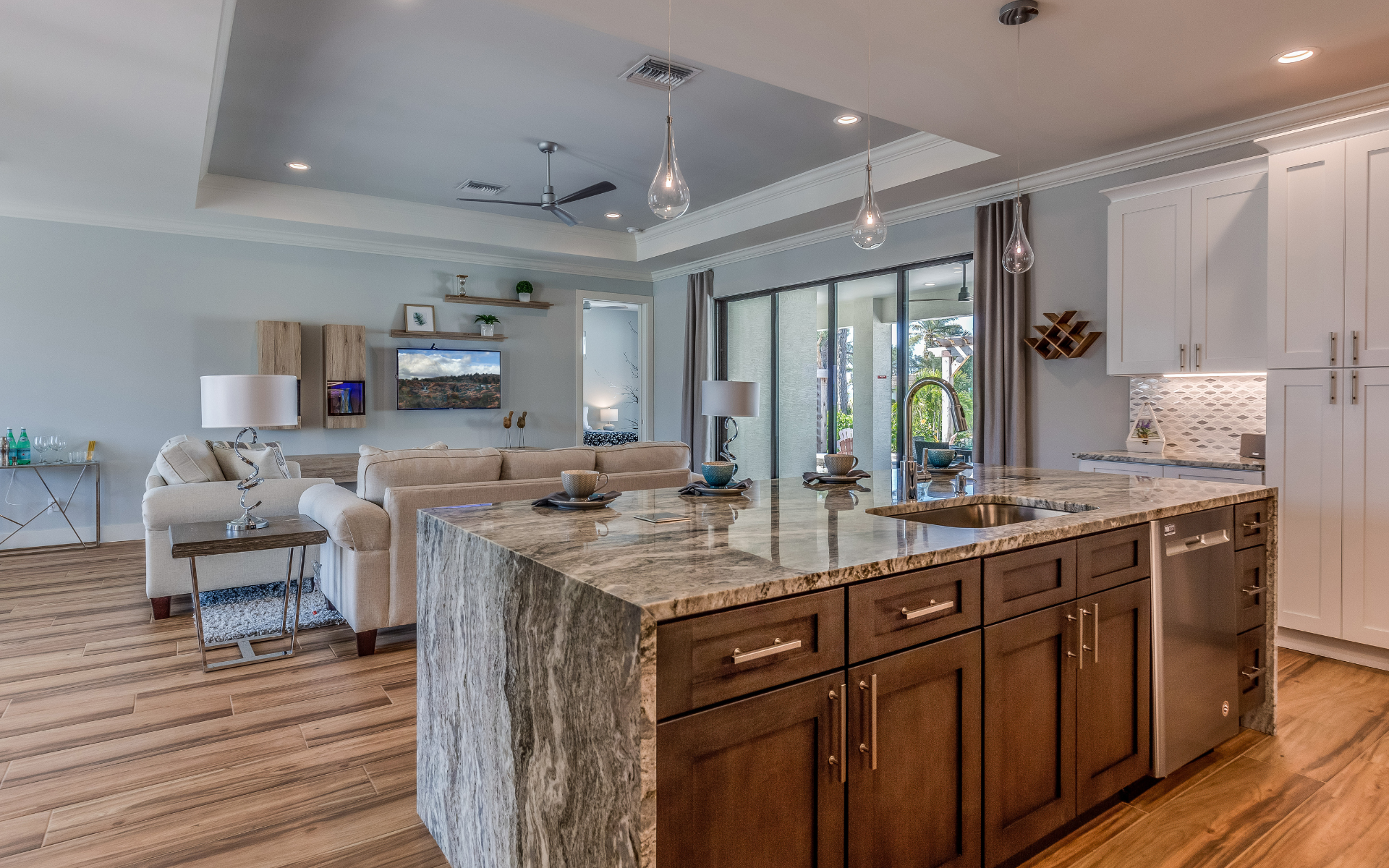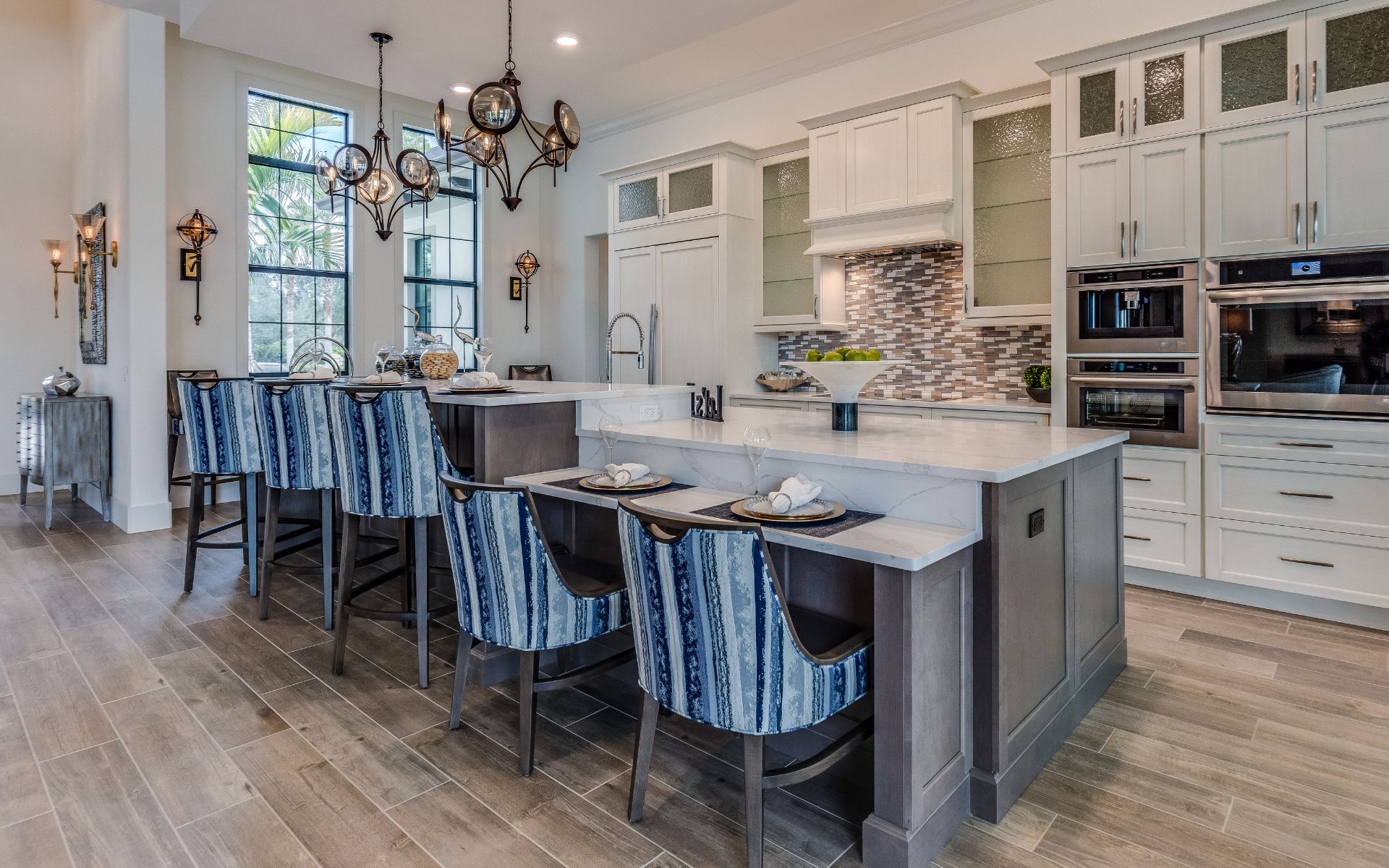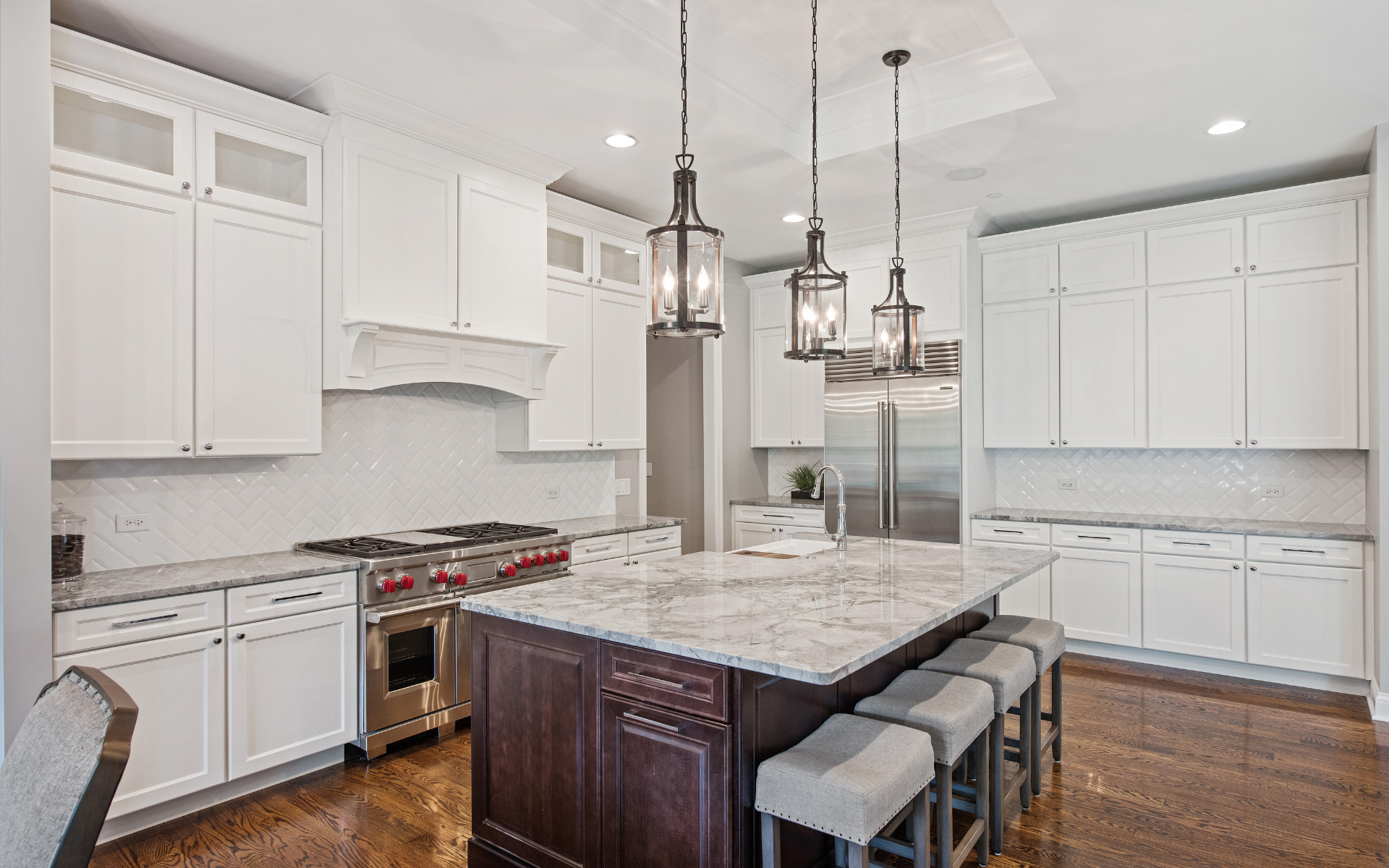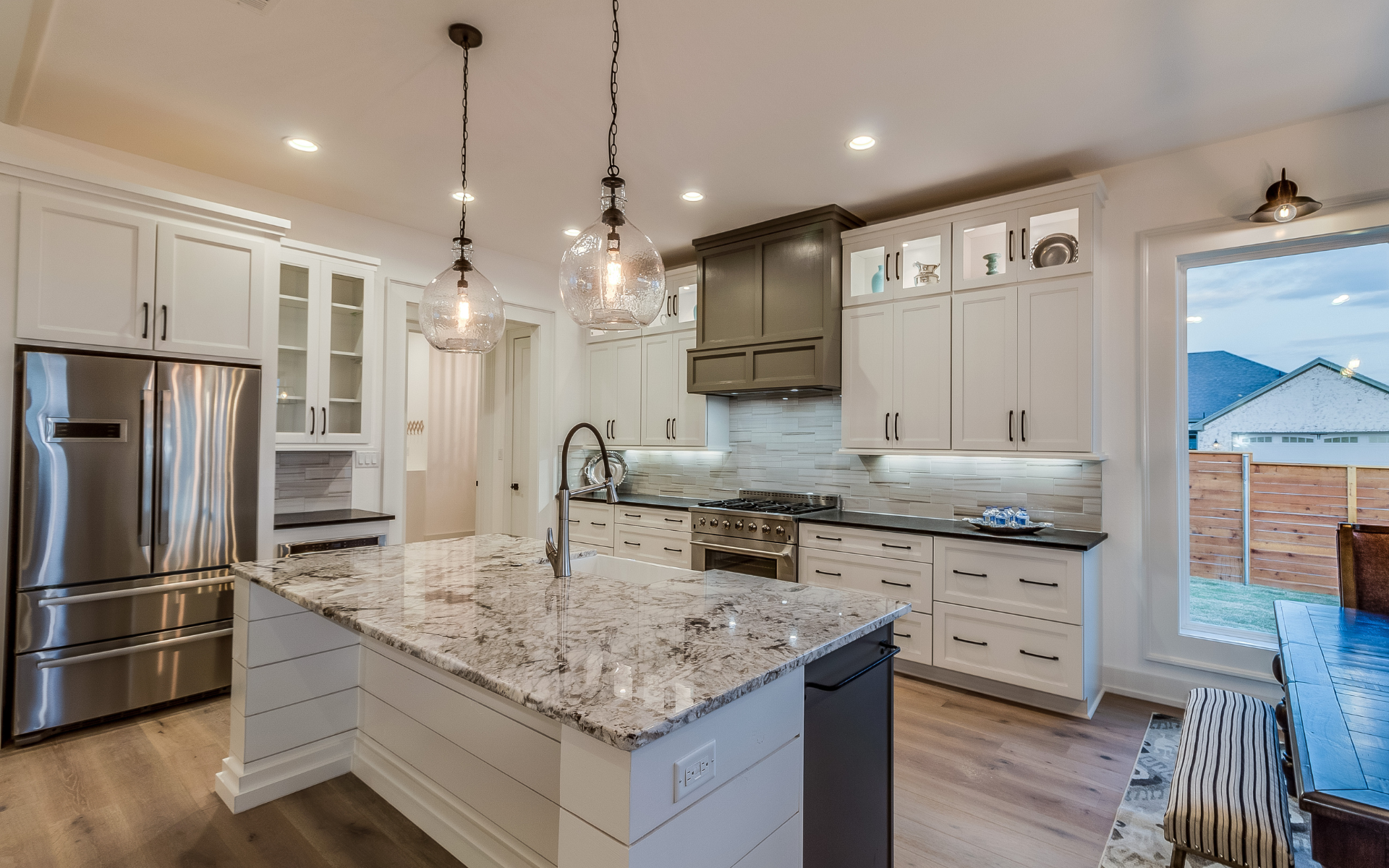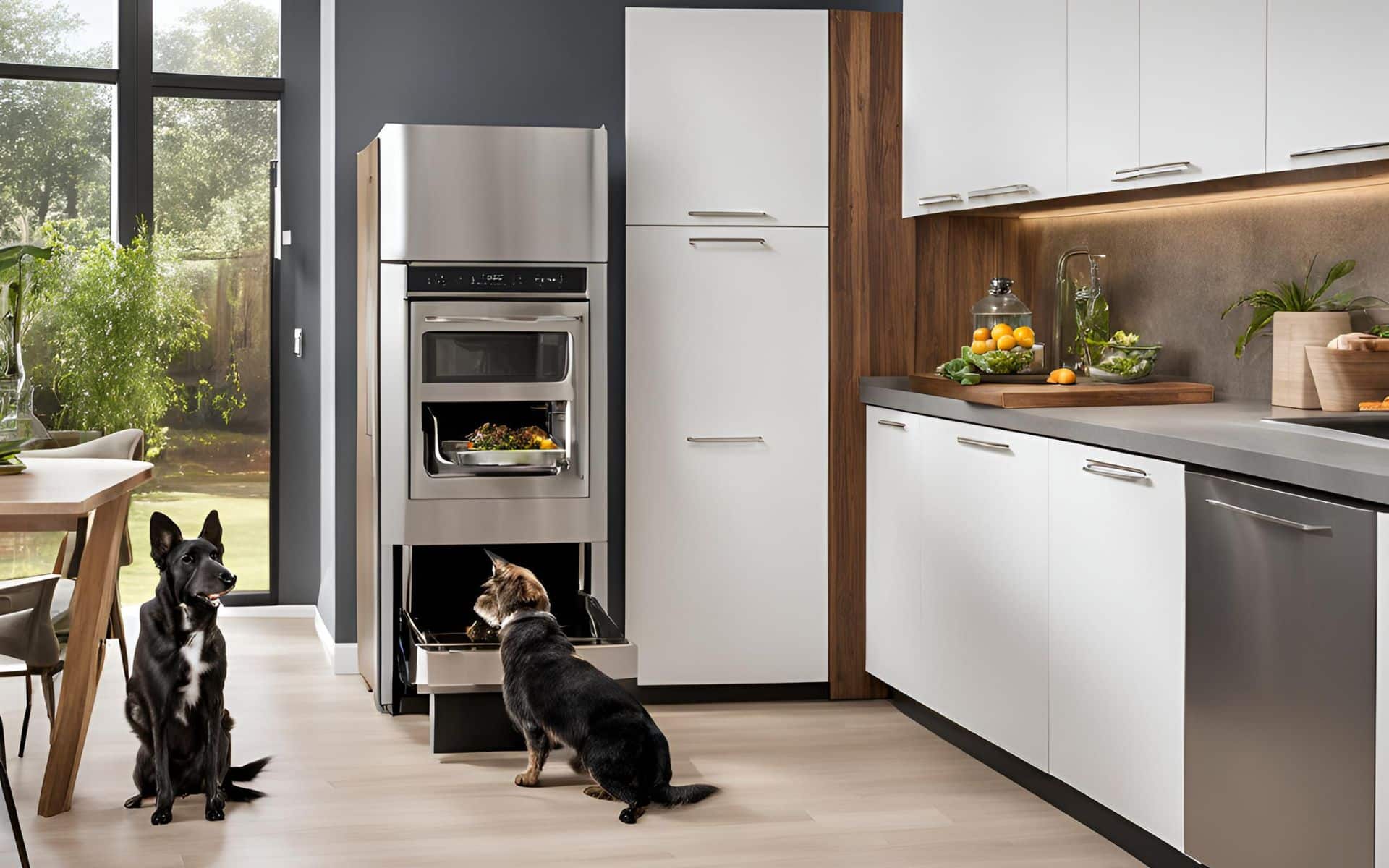Kitchen islands are the ultimate multi-functional addition to any kitchen remodel plan. An island provides extra prep space, seating, and storage while also allowing you to utilize the overall kitchen layout better.
When designed thoughtfully, a kitchen island can transform the way you cook, clean, eat, and entertain at home. This complete guide covers everything homeowners need to know for incorporating a kitchen island – from size and dimensions to shape, seating, storage, and more. So, before jumping into hiring a kitchen and bath remodeling contractor, knowing all the important things matters. This helps you make the right decision regarding your project.
Determining the Right Size and Dimensions
When designing your dream kitchen island, size, and dimensions should be your first consideration. The ideal island size depends on your kitchen layout, traffic flow, seating requirements, and prep/storage needs.
As a general rule of thumb:
- Islands should be 4-5 feet long and 2-3 feet deep for a single cook (allow more space for multiple cooks).
- Leave at least 3-4 feet of clearance around the island perimeter for proper traffic flow.
- Allow for at least 1-2 feet of overhang for seating space.
You’ll also want to check that your island size and location meet standard building codes and accessibility guidelines for clearance around appliances, doorways, etc. An experienced kitchen designer or architect can ensure your layout and dimensions are sound.
As recommended by HomeAdvisor’s kitchen remodeling guidance, proper kitchen island dimensions help optimize your layout and traffic flow.
Height and Seating
The standard kitchen island height is 36 inches – which allows it to align with most kitchen countertops. For a dining space, a bar-height island (usually 42 inches) is recommended to accommodate bar stools for eating and entertaining.
Make sure to incorporate comfortable overhangs (12-15 inches) on the dining/seating side of an island. Also, check that your stools will fit properly within the height and depth of your island overhang.
Experts from This Old House also advise leaving ample space around your island, noting that mapped-out traffic patterns ensure your kitchen functionality is maintained.
Incorporating Storage
One of Kitchen Islands’ main appeals is the additional storage they provide. When planning storage for your island, consider what you’ll need handy access to – like cooking prep tools, serving ware, or table settings.
Some popular island storage options include:
- Drawers: Great for utensils, tools, cutlery, and linens. Allow for a range of drawer sizes.
- Cabinets: Good for larger items like dishes, appliances, and pantry goods.
- Wine fridge: Perfect for keeping favorite bottles on display within reach.
- Deep pull-out shelves: Offer storage for pans, trays, or stand mixers.
- Towel racks or bars: Provide easy-access space for dish towels or potholders.
- Baskets: Can hold fruits, vegetables, cookbooks, and more.
Also, think through needed access to power outlets and switches for installing things like charging stations, lighting, or built-in electric appliances.
Choosing an Island Shape
Beyond dimensions and storage, the stylistic design of your island will have a big impact on form and function. Consider the overall style of your kitchen when choosing island features like shape, countertops, hardware finishes, and decorative details.
Some popular kitchen remodeling ideas with island-shape options include:
L-Shaped Kitchen Island
L-shaped islands are ideal for maximizing prep space and storage while also designating space for seating. They fit well in longer, galley-style kitchens. The long side faces the rest of the kitchen while the short side features an overhang and seating.
U-Shaped Kitchen Island
As the name implies, U-shaped islands provide seating space on two sides or “arms” of the island – great for open kitchens allowing access from multiple sides. It offers ample room for prepping, cooking, presentation, and seating multiple guests.
Square Kitchen Island
A square island with seating on all sides gives you symmetry and accessibility. The open design also lends itself well to conversational spaces, allowing cooks and guests to face each other.
Circular Kitchen Island
For a unique, focal point island a circular or oval island adds artistic appeal. Round islands soften hard lines, open up spaces, and allow guests to congregate all the way around. Just be sure to allow ample room for navigating around it.
Kitchen Island Styles to Consider
In terms of style, some popular kitchen island looks include:
Industrial Style
Exposed materials like wood, metal, or concrete paired with black finishes, pendant lighting, and metal hardware to create an urban loft aesthetic.
Rustic Kitchen
Incorporates reclaimed wood, vintage accents, open shelving, and farmhouse sinks to cultivate a cozy, country charm. Butcher block countertops further the rustic feel.
Classic Farmhouse
The classic farmhouse-style island has a timeless appeal, often featuring shades of white painted cabinetry, open shelving, and vintage accents. Butcher block countertops and an apron-front sink maintain the traditional farmhouse aesthetic. Wrought iron fixtures and pendant lighting further the cozy style.
Modern Minimalist
The sleek, contemporary island features a streamlined silhouette. Neutral tones, matte finishes, and handleless drawers align with minimalism. Ensuring clutter-free surfaces and hiding storage within cabinets maintains the clean, purist style.
Traditional
This island style features elegantly molded cabinetry fronts, raised panel doors, and crown decorative trim. Neutral painted finishes or rich wood stains match well with granite, quartz, or marble countertop materials. Ornate corbels, trim, and accent lighting lend traditional refinement.
Mediterranean Island
Inspired by Tuscan and Spanish style, the terra cotta, stucco, and wooden finishes replicate the Mediterranean aesthetic. Elaborate tilework, carved accents, and an eclectic mix of colors, textures, and materials capture the old-world charm.
Transitional Island
This island strikes a balance between traditional and contemporary elements. The transitional blend mixes clean lines, streamlined silhouettes, and neutral finishes with classic hardware, raised panels, trim accents, and turned legs. It effortlessly bridges old and new designs.
Key Planning Considerations
When deciding if and how to incorporate a kitchen island, be sure to evaluate the following considerations:
Primary Sink Location
The island can house your kitchen’s main prep/clean-up sink. Locate dishwashers nearby for easy unloading. For open floor plans, an island sink allows the cook to face the living space while working.
Just be sure to factor in proper ventilation, garbage/compost access, water supply lines, drains, and required clearance around the sink.
Appliances
If adding appliances to your island, allow for necessary outlets, wiring, plumbing, and ventilation. Common island appliances include sinks, range tops/cooktops, warming drawers, wine fridges, and electric outlets.
Seating
Think through the desired seating capacity around your island and allow for adequate space. Typical kitchen islands allow seating for 3-4 people with 15 inches of countertop overhang. Check that the depth, height, and shape accommodate comfortable bar stool seating.
Traffic Flow
Always allow for sufficient walking space around the island perimeter. Measure your room to accommodate trafficked doorways and work trip areas without bottlenecking. Maps out traffic patterns during cooking, cleaning, and socializing use.
Lighting
Sufficient task lighting ensures your island offers visibility for food prep and dining. LED pendant lights or recessed lighting work well over islands. Allow also for accent, and mood lighting.
Bringing It All Together
Architects and kitchen designers can help you marry style and function – optimizing storage, seating, appliances, and workflow while reflecting your unique taste. Be sure to communicate how you intend to use your kitchen and island during cooking, cleaning, dining, and entertaining.
From crafting gourmet meals to casual snacking, your dream kitchen island can do it all. The ultimate gathering spot promises both beauty and versatility for years of memories around the table.
With mindful planning guided by your lifestyle needs, personal style, and a dash of creativity – your kitchen island can become the heart of your home. This overview covers key considerations for incorporating an island during your next kitchen remodel or custom build.
Conclusion: Creating an Island Oasis
Your kitchen island provides the perfect opportunity to add form and function while also reflecting your flair. When thoughtfully designed, it will enhance how you utilize your kitchen across cooking, cleaning, casual dining, and entertaining use cases.
Be sure to measure twice and plan for traffic flow, storage, seating, lighting, and appliances based on your family’s needs. The effort pays dividends for years to come.
Beyond the utilitarian benefits, a kitchen island also serves a greater purpose as a gathering place to foster connection. It sets the scene for meaningful conversation, meals shared, glasses raised, and moments worth celebrating.
Here’s to converting unused kitchen space into an island oasis for all life’s memorable milestones – big and small. May your new island be the anchor of your home and hub of hospitality for family and friends.

